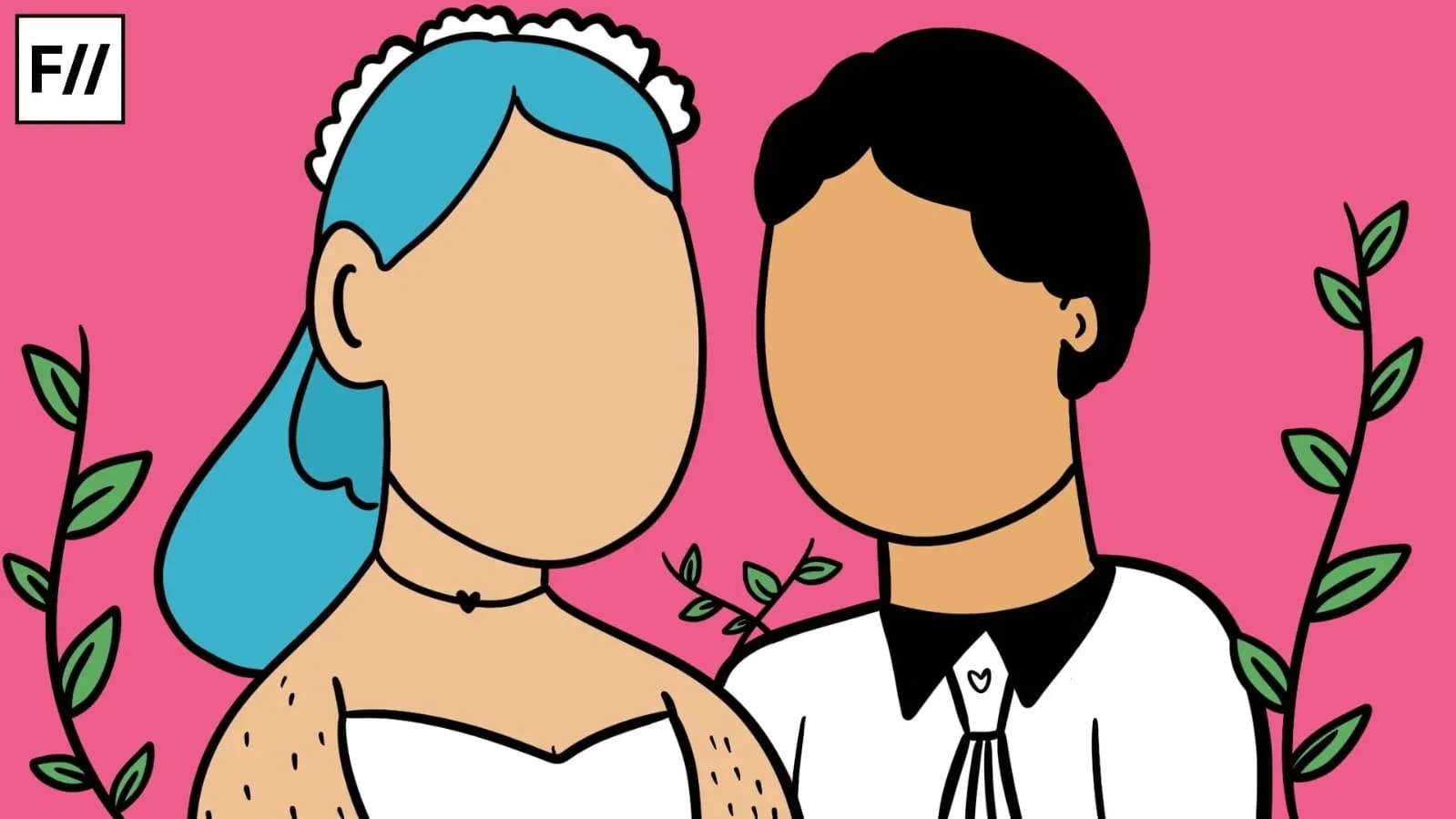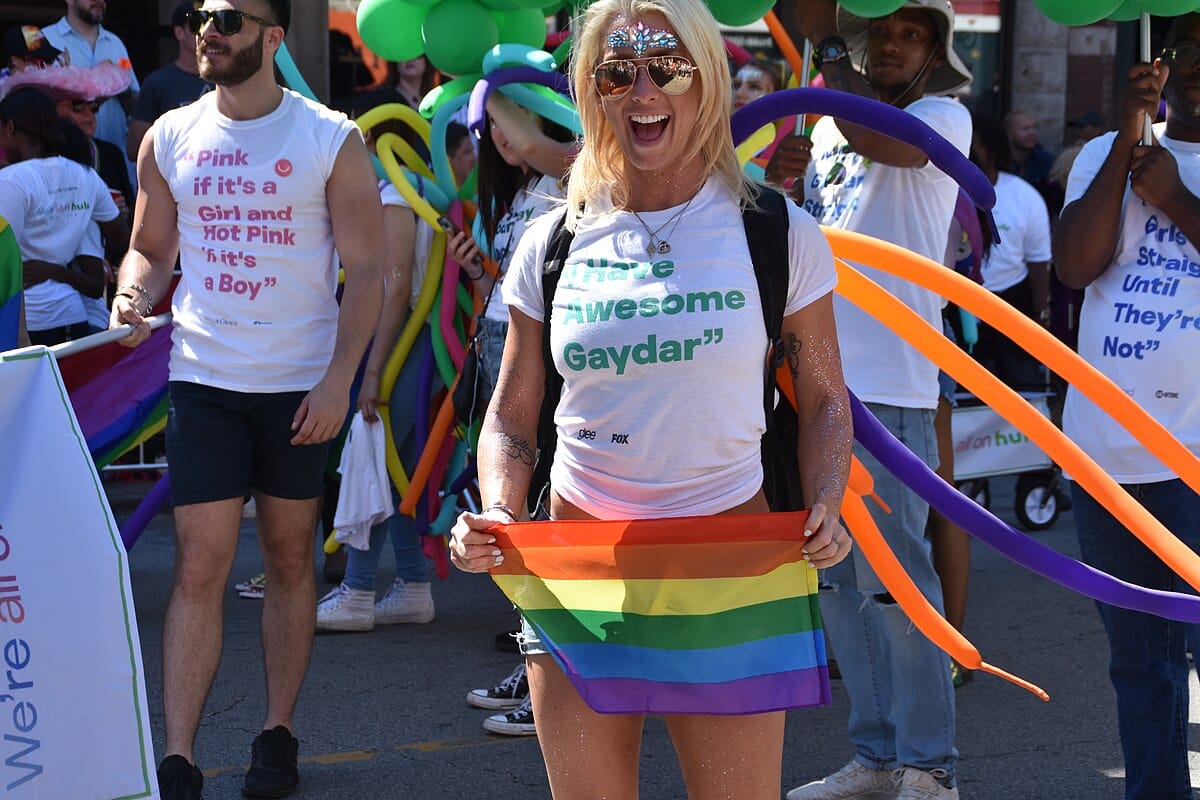Posted by Pratyusha Pramanik
In November, when Pushpak Sen’s post went viral, I could easily empathise with his mother, who was slut shamed by her close relatives for wearing red lipstick. While wearing lipstick is no more a revolutionary act, wearing a red lipstick still is. People in India have slowly started to accept the idea of women wearing shades of nude, pink and brown; however, they are yet to make peace with the red lipstick.
In popular media, the Bhojpuri song lagawelu jab lipistick not only objectifies women wearing lipstick but is a reflection of the general perception of the mass towards women wearing lipstick. The popularity of the song vouches for my argument. Like Edith from Satyajit Ray’s Mahanagar, we are equally baffled thinking if the woman can wear vermillion on her forehead then why not red lipstick on her lips!
Like Edith from Satyajit Ray’s Mahanagar, we are equally baffled thinking if the woman can wear vermillion on her forehead then why not red lipstick on her lips!
The mystery around women wearing red lipstick dates back to the Egyptian civilisation, where both men and women were said to wear lipstick. In ancient Ayurveda, people used ghee mixed with dry petals of rattan jyot as a therapy for dry and chapped lips. However, the lipsticks of the Egyptian origin often were made of lead and other toxic substances, which often proved fatal. It is said that the highest class women in Egypt were entombed with two pots of lipstick after their death. In the Greek Empire, it was illegal for sex workers to appear publicly without lipsticks. Lipstick would denote who was a sex worker and who was not. And when a sex worker would not wear lipstick, it would taken as an attempt to deceive men into matrimony.
In the Medieval ages, lipstick was associated with witchcraft. It was construed during the crusades that wearing lipstick was a way of challenging ‘God and his workmanship.’ So the use of lipstick was highly restricted and was a risky affair. In the Elizabethan age, not only do the sonnets and other works of literature compare the lips of the beloved with a red rose, Queen Elizabeth I, herself was very fond of the red lipstick tint. Now, it came to be believed that lipstick could ward off death and give an ever youthful appearance. The beautiful Queen was responsible for such a popular myth; she is often considered to have died of the heavy overdose of white lead from her lipstick. Lipstick was so much in vogue that it was sometimes substituted for cash.
The lipstick soon was discarded in England on being associated with the devil and sins in the Puritan age. It, however, continued to be in fashion in France. In 1770, the British government finally passed a law that formally condemned lipstick on the basis that “women found guilty of seducing men into matrimony by cosmetic means could be tried for witchcraft.” This was the case in a few American states too.
In late 1800s, when the lipstick was making a gradual comeback, Sarah Bernhardt caused a huge controversy by applying lipstick in public. It was still considered appropriate to apply lipstick only in private. Frida Kahlo, Clara Bow and Mae Murray have made a significant contribution in popularising various lipstick looks and making them a favourite among their followers. It was in 1915 that the metallic sliding case of lipstick was invented; however, lipstick was still not free of toxic ingredients. It was also around the 1920s when the trend of red lipstick reached India, although it still preferred very light makeup.

“The first and most famous manifestation of red lipstick was in fact in New York when the suffragettes took to the streets, banded together, and as part of their defiance and fight for the vote, they all wore bright red lipstick,” Madeleine Marsh, the author of Compacts and Cosmetics, told WNYC. Companies and makeup artists handed the suffragettes red lipsticks to capitalise the movement of these brave women. Red lipstick soon became a marker of independent women.

During the Second World War, as more and more women took up masculine jobs in the absence of men, women preferred to apply lipstick to reinforce traditional femininity. It also became a weapon of protest against Hitler who had voiced his distaste of lipstick, especially the red lipstick. Several successful advertisement campaigns had been able to reinforce the idea of lipsticks being associated with empowered women. The second and third wave of feminism has seen the ebb and flow of the popularity of lipstick among women. While the second wave denounced lipstick and makeup, which were considered tools of patriarchy to objectify the beauty of women; the third wave feminism encouraged women to embrace their desires and sexuality.
The lipstick, however, continued to remain to be women’s best friend even during the great recession, when they indulged in petty pleasures as compared to more luxurious beauty items. This came to be known as the lipstick effect. The use of a mask during the pandemic has shown a downward trend in the use of lipstick, however, that may be a short term setback, as we see women choose smudge-proof liquid lipsticks. Lipsticks, be it under the Burkha or the Mask, it is here to stay.
Also read: Covid-19 Recession’s Impact On Women Goes Beyond The Lipstick and Kajal Index
Makeup and beautification are often considered a privileged affair. Combing each other’s hair and dressing up together is still seen as acts of female friendship. This is as much seen in blue-collar workers, as in white-collar workers. While the cost and quality of the product may vary, but the joy and delight of using a lipstick remain the same across religion, class and caste.
In India, most women are still not able to choose their partners for life, and as it seems they are also not able to choose the shade of their lipstick. This is inherently connected with the expression of desire and pleasure, and the right to determine how she looks. The association of lipstick and makeup with sex work (along with the degradation of sex work as prostitution) and seducing men still exists in India. Seemingly innocent makeup jokes about women who apply ‘too much makeup’ or about women ‘who need to apply makeup’ still go uncensored, like any other sexist comments.
Family, as an institute of bullying, goes hand in hand with schools and girls hostel. Female children are not only polished to grow up as dutiful wives and mothers; they are also policed to keep their desires in check. So women are still taught to grow their hair long and keep their lips muted (pun intended). It is not surprising, therefore, to see a fifty-four-year-old woman being shamed by her family in front of her son.
Slut-shaming women and witch-hunting is not restricted to women wearing red lipstick. Any woman who has dared to be a deviant has been a victim of both. It is painful to accept that systems such as family which we have been taught to respect and sanctify, continue to be toxic and regressive.
Also read: Makeup Shaming – Why Are We Still Doing It?
Slut-shaming women and witch-hunting is not restricted to women wearing red lipstick. Any woman who has dared to be a deviant has been a victim of both. It is painful to accept that systems such as family which we have been taught to respect and sanctify, continue to be toxic and regressive. Nevertheless, it depends on us how we look at makeup in general and lipstick in particular; it could be the agent of patriarchy or the sweet kiss of female bonding and friendship.
Featured Image Source: Pinterest
About the author(s)
Pratyusha Pramanik is a Research Scholar and Teaching Assistant in IIT(BHU) Varanasi. She is interested in Post Colonial Resistance and Protest Movements, Gender and Film Studies. She loves momos, coffee and binge-watching K-Dramas. If not gender sensitising her students, she is busy planning her next solo trip. She will someday own a cafe or a sunflower field.




